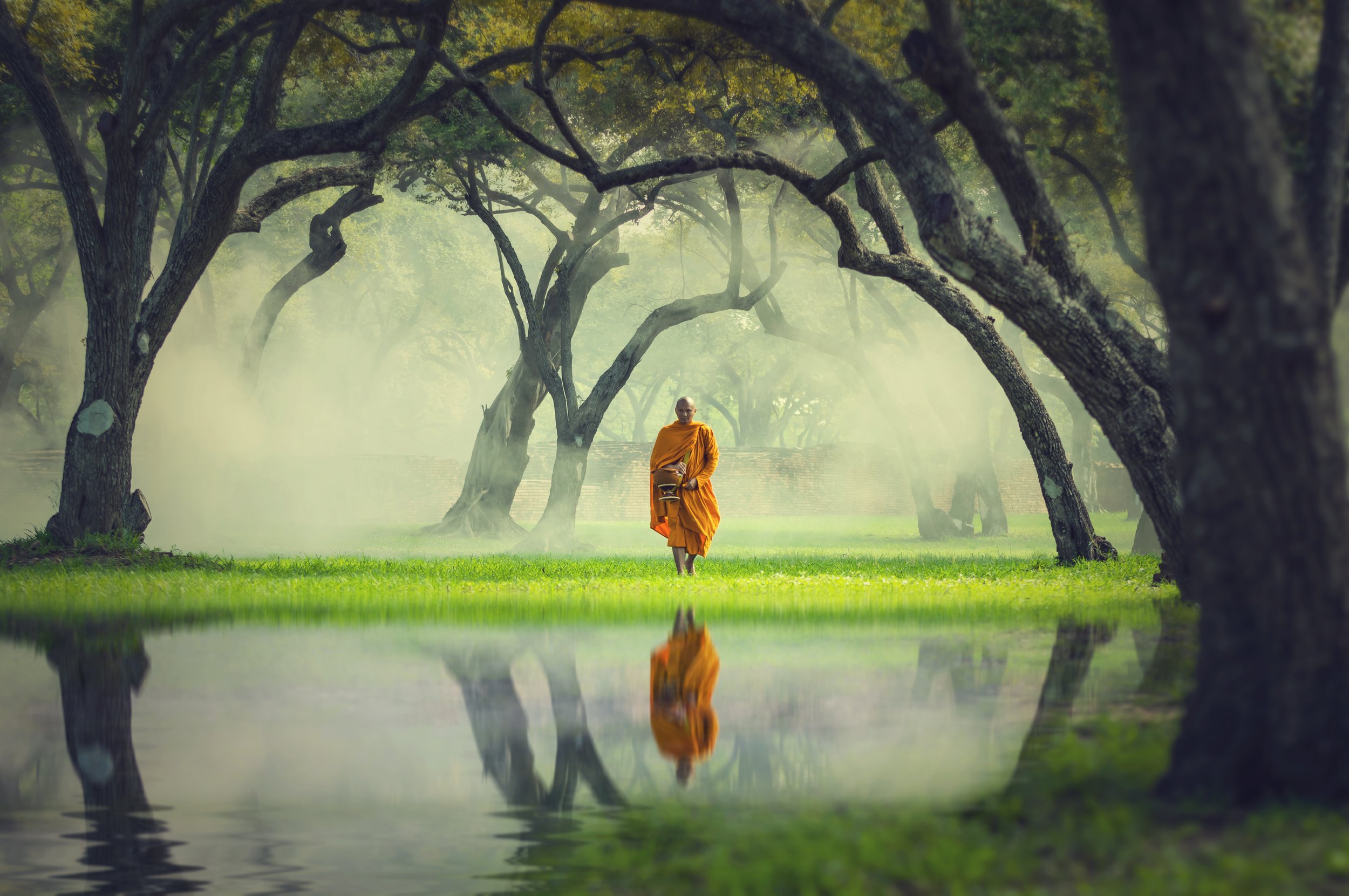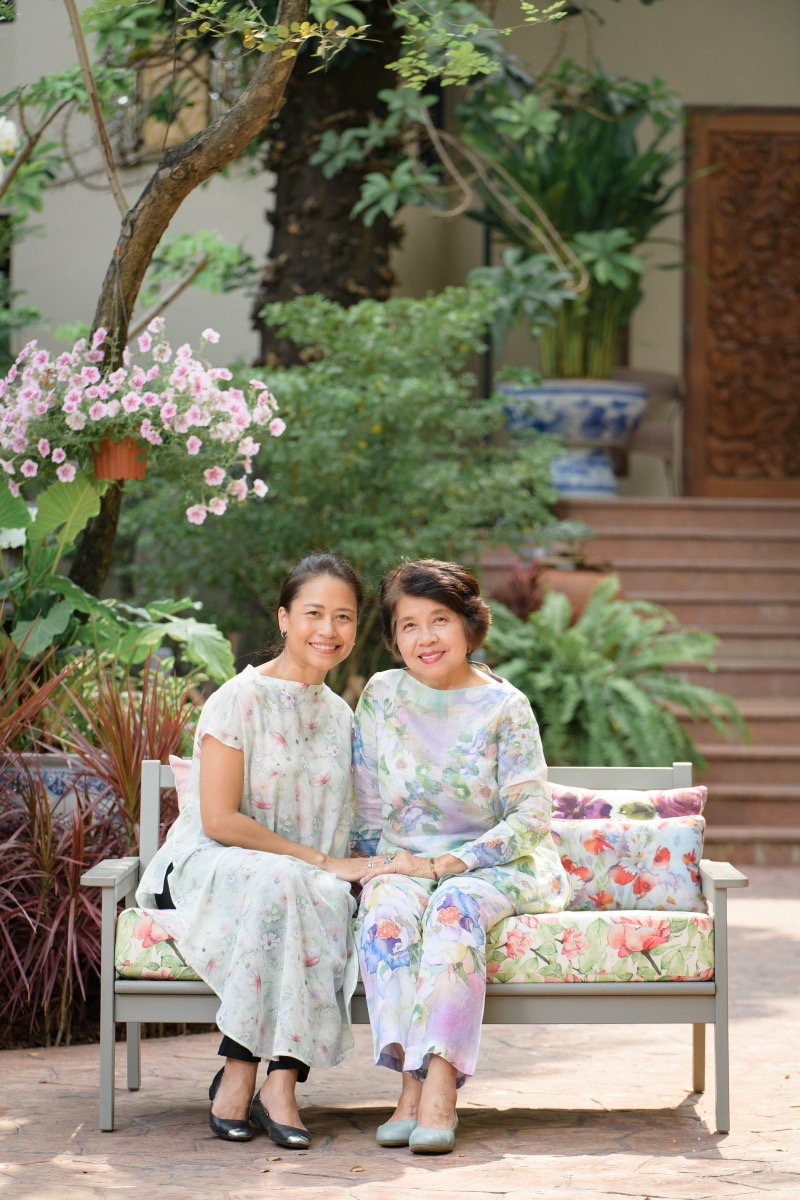Journey of discovery
My mother and I share same passion for nature, and believe in the imperfection that nature is, and we believe that beauty should be both aesthetic and ethical.
We went on a search for a sustainable fabric to print our art work on. Little did we know that something we thought was simple would turn out to be a year long project, with much travelling to Japan, Hong Kong, Malaysia, and Vietnam. There were so many beautiful handcrafted textiles, but it wasn’t what we’re were looking for. We wanted handmade fabrics made using traditional methods by local artisans with only natural fibres. We love the idea of combining people and materials, so we therefore set out to create a process that benefited not only our customers, but the people who made it as well as our planet. After we came back we went to eastern of Thailand where they have reputation for their textiles but we didn’t find what we were looking for. And when we thought all hope was lost, my mother suggested that we visit up north of Thailand where there are small villages that does textile work.
There are many small communities in the north of Thailand with skill in textile. We were recommended to go to Chiang Saen in a district called Ban Sop Kham. There are 70-80 households. There is a well known temple called Wat Phrathat Pha Ngao. The temple holds a ceremony called Chula Kathin. This merit-making tradition used to be held annually, but over the years only a few communities continued to carry out this religious ceremony. The villages would grow their own cotton along side the rice paddies. During the Buddhist Lent known as “Pansa”, Buddhist monks in Southeast Asia are confined to their monasteries and temple compound. At the ceremony, the community would gather together to produce robes within a 24 hours period. The step of production that must be performed in this time frame include collecting the raw cotton, dyeing the woven fabric and weaving one set of robes, minimum of 7 metres. The fabric may come from different looms as the official form of the robe resembles the patchwork design of a rice field.
With this tradition has enabled the community to preserve its weaving heritage and applying techniques handed down through generations. Local heritage is one of the most valuable thing we wish to combine into our work. And we believe we have found the perfect fabric for the project. The local ladies at Ban Sop Kham grew their own organic cotton and weaving. They combined their faith and skill to create beautifully crafted cotton fabric for kasaya (monk’s robe) as part of their community work.
Both my mother and I believe we should be driven by kindness, passion, and good faith for good outcome. The benefits should not only be for the individuals but as a community.
WORKING TOGETHER
My mother Worawan is a self-taught watercolour artist based in Bangkok, Thailand. With her passion for nature and botanicals comes a series of floral painting - this gives her a sense of connection with nature. All of her paintings are based on her memories of her favourite flowers from childhood to present day. Worawan incorporates her knowledge of the plants and how she sees them into her work. She fell in love with watercolour’s wonderful imperfection and unpredictability. Her cheerful colours and strokes reflects the true feeling of her love for the natural world.
From Fine Art to photography, I have eventually discovered the world of surface pattern design. I was fortunate to have an extremely creative mother who always encouraged to follow my passion for art. I am an artist based in Christchurch, New Zealand. I grew up here, was educated here, and have raised my family here.
I never imagined we would end up collaborating our hand painted and digital medium work together, but here we are doing exactly that, and it’s wonderful. I used my mother’s watercolour to create a repeat patterns for our fabrics. Our work illustrates the simple joy and sheer beauty of my mother’s flowers. It has certainly been incredibly rewarding working side by side with my mother. Although we are in different parts of the world, our work has brought us closer than ever through our shared ideas, and our mutual passion for our creative processes. We can indeed be the very opposite in our approach, however we are very similar in our visions for the future of both our business and the natural world.
What’s exciting about being an artist is that you are never done. There is no obvious outcome. There is no mastery. There is only the next idea, the next painting, the next creation. The reward is in the process as much as the outcome.


